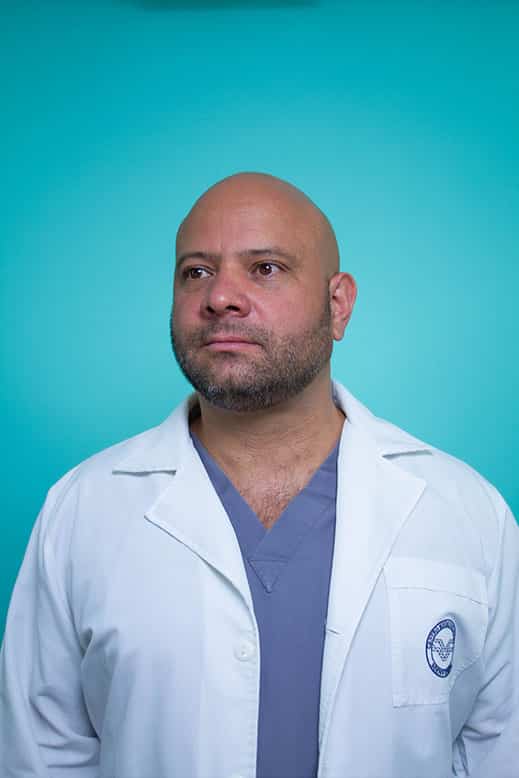Zirconia crowns -or zirconium- are a very effective method to restore dental esthetics.
They also provide greater resistance to the tooth if it has lost part of its surface, and can replace it if the patient is missing a tooth.
Thanks to dental caps, the person recovers the functionality of his or her jaw and prevents the dangers of missing teeth, such as bone loss.
It is important that, in both cases (whether a tooth has been lost or the natural tooth is damaged), the area is reinforced to avoid further problems.
But what exactly do we mean when we say “dental crown”?
Below, we will explain its characteristics and advantages, focusing mainly on zirconium caps.
What is a dental crown?
When we talk about a crown, we are referring to a cap that is placed on the tooth.
It can also be placed on implants if the patient has previously undergone this surgery.
For practical purposes, the crown acts as the natural tooth, both for its esthetic finish and its resistance.
The dentist usually recommends the use of caps in three cases:
Loss of a tooth: for health reasons, it is advisable for the person to recover the tooth and avoid having malocclusion problems.
In this case, the professional places an implant that will later be covered by a crown.
Deterioration of the dental piece: this is a case in which the patient preserves the natural tooth, but the surface has experienced a great deal of dental wear.
A veneer is a good way to reinforce the tooth and prevent further deterioration.
Aesthetic issues: if the shape, color or position of the teeth is not to the patient’s liking, a dental veneer can be used to renew the smile.
Zirconium dental crowns are very resistant and thanks to their natural look, they are also suitable for use on the most visible teeth.
Types of dental caps according to the patient’s needs
Crowns can replace any tooth, but it is clear that a molar tooth does not have the same visibility as a canine tooth.
The dentist will recommend the placement of one or the other depending on the patient’s esthetic needs.
For this reason, dental caps are manufactured using different materials.
Metal-porcelain
This type of caps consists of a metal cap that completely covers the patient’s remaining implant or natural tooth.
The metal part fits perfectly in the person’s mouth, and is covered by a porcelain crown that will achieve the appearance of a real tooth.
Metal-porcelain crowns are especially indicated to replace molars due to their great resistance.
Metal-porcelain crown
Enlarge image
METAL-PORCELAIN CROWN
It is not recommended for use on front teeth because, as the sleeve is made of two materials, it is possible that patients with receding gums may see their esthetic finish worsen and leave part of the metal visible.
If this is the case, the usual procedure for the periodontist would be to start treatment to improve the condition of the gums or to use other types of caps that mimic the appearance of the tooth as closely as possible.
Quality vs. price
Although metal-porcelain dental caps are the most economical, price is not the only factor that should play a role in deciding what material you want your crown made of.
Porcelain
There are dental crowns made solely of porcelain.
This material is able to adapt to the exact shade of the rest of the teeth, so it manages to create the sensation that it is not a prosthesis.
However, it is not recommended for reinforcing molars because it is a less strong and solid material.
Zirconium
The use of zirconium in dentistry is relatively recent.
This white material gives a very natural result and, as it does not have a metal part, it allows light to pass through.
Experts recommend zirconium dental caps for the most visible teeth, since these crowns, due to their translucency, are not as bulky and thick as those mentioned above.
Sample caps
Enlarge image
ZIRCONIUM VENEER
Reasons for choosing zirconium dental crowns
This type of dental veneers are the most esthetic veneers currently available on the market.
As they are made of 100% zirconium, they will always remain the color of the tooth you have chosen.
The fact that there is no metal in zirconium caps has many benefits for patients who choose this material.
The person can choose the shade that most closely resembles the natural shade of their neighboring teeth, so the veneer blends in perfectly and there is no visual evidence that it is a prosthesis.
Wear of the zirconia crown is minimal over time, and even if it were to occur, the sleeve would still look the same shade as the rest of the teeth because there is no metal in it.
The use of a single white material for the fabrication of the veneer ensures that patients with receding gums do not experience an unsightly contrast due to the metal.
Zirconium is a material that is totally biocompatible with the body so that the patient will not have a rejection for allergy reasons.
DO YOU WANT TO IMPROVE YOUR DENTAL ESTHETICS?
Advantages of zirconium caps
Also known as metal-free caps, the main advantage of these crowns is the material.
Zirconium has made it possible to increase the strength of the crown to the same level as metal-porcelain crowns, but with the color, shape and translucency of a natural tooth.
The patient does not appreciate esthetic and functional differences with respect to their teeth, so the crown behaves like another tooth in the mouth.
Thanks to its strength, the person is able to chew normally. Zirconium crowns are highly resistant to breakage.
The continuous contact between the metal and the gum can cause the periodontal area to darken in some cases.
However, this is not the case with zirconium dental crowns.
In addition, its shade does not change, so it will retain the white color of the teeth without darkening.
Zirconium dental crown
Enlarge image
PLACEMENT OF A VENEER
Take care of your dental crowns
Despite their many advantages, it is important to be careful with dental crowns made of zirconium or any other material.
The caps cannot have cavities, but the natural tooth that supports it can.
Therefore, it is important to use dental floss to remove all food debris that may have remained between the teeth.
The adjacent teeth should also be brushed to avoid the appearance of periodontal diseases.
This type of pathology affects the root of the tooth in the most advanced cases, which is ultimately the part on which the crown is supported.
There is no need to have any problems with the dental sheath if the patient visits his dentist regularly and follows his instructions correctly.
A well cared for crown can last for many years and need not cause any oral problems.



